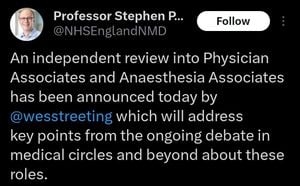The White House has issued a strong condemnation of the neo-Nazi march held over the weekend in Columbus, Ohio, where masked individuals paraded through the streets displaying swastika flags and shouting racial slurs. This disturbing display of hate has prompted officials at multiple levels to voice their outrage and call for unity against such ideologies.
According to reports, the unsettling scene unfolded on Saturday, with videos surfacing online showing approximately twelve individuals clad entirely in black and concealing their faces. These individuals marched through the streets, brandishing flags emblazoned with red swastikas and unleashing offensive language. One video even captured people from this group using bullhorns to hurl racial slurs at bystanders, sparking outrage among community members.
A spokesperson for the White House, addressing the incident, highlighted President Biden's stance on the matter, emphasizing, "President Biden abhors the hateful poison of Nazism, antisemitism, and racism—which are hostile to everything the United States stands for." The spokesperson described the march as "a sickening display" of extremist beliefs and actions.
The backlash wasn't limited to Washington, D.C. Ohio's Governor Mike DeWine also denounced the participants of the rally, stating, "There is no place in this state for hate, bigotry, antisemitism or violence, and we must denounce it wherever we see it." His statement reflects the concern shared by many locals who were alarmed by the display of such extreme views.
Local police did respond to the march, receiving several complaints from the public around 1:30 PM. Initially, officers detained some members of the group but later released them after determining no laws had been broken during the march. The incident involved reports of potential physical confrontations, including claims of pepper spray being used, but authorities confirmed no arrests were made.
Columbus Police Chief Elaine R. Bryant noted the delicate balance law enforcement must maintain, stating, "The Constitution protects First Amendment activity, no matter how hateful." She assured the community, "No one...should experience intimidation or harassment." The fact remains, as disturbing as the event was, it falls under the protections afforded by free speech laws.
The confrontation on the streets of Columbus echoed similar incidents across the country. Just days prior, another neo-Nazi group was seen rallying outside a theater performance of The Diary of Anne Frank in Michigan, where individuals similarly waved Nazi flags. Observers are noting these occurrences seem to be increasing in frequency, particularly as they pertain to performances or events with historical significance pertaining to the Jewish community.
Oren Segal, vice president of the Anti-Defamation League's Center on Extremism, shared insights on this disturbing trend, stating, "There are more and more groups marching with swastika flags, and they are increasingly organizing these smaller, more targeted events." Segal explained these protests emerge from online communities, serving to reinforce hateful rhetoric as participants bring their sensationalist ideologies to life.
The rise of such incidents has not gone unnoticed. The ADL, which actively monitors acts of white supremacy across the nation, reported hundreds of similar events occurring over the past two years, signaling the urgency for communities to remain vigilant against hate speech and extremism.
The reactions to this Ohio march also reflect underlying tensions as local officials rally to remind communities of the dangers posed by such extremist ideologies. Columbus Mayor Andrew Ginther expressed his firm stance against hate, calling the march "cowardly" and highlighting the city's commitment to ensuring every community member feels safe, regardless of who they are or how they choose to worship.
Local leaders have reiterated the importance of standing united against hate crimes and hate groups, reinforcing the necessity for collective denunciation of any acts of bigotry or violence. They acknowledge the darker so-called “underbelly” of society which seeks to not only sow division but also instill fear among communities.
Despite the constitutional protections surrounding free speech, many argue there lies an ethical responsibility to condemn hate speech and take steps to protect communities from it. Going forward, the conversations initiated by this incident will likely dominate not only local discourse but possibly inform broader societal dialogues surrounding civil rights, hate speech, and the legal bounds of free expression.
The marchers’ actions, from waving Nazi flags to shouting racist slurs, only serve to haunt Ohio's recent past, bringing memories of division and hatred to the forefront. Officials and community members alike have expressed their determination to fight against such ideologies spreading within their neighborhoods.
Moving forward, it remains to be seen how the conversations prompted by this disturbing event will shape policies, encourage advocacy against hate crimes, and mobilize communities to band together against all forms of bigotry.



